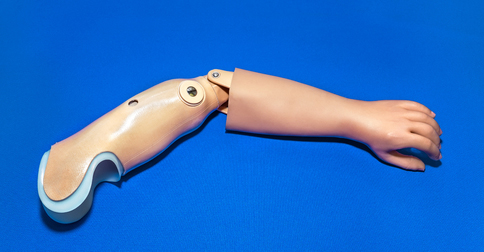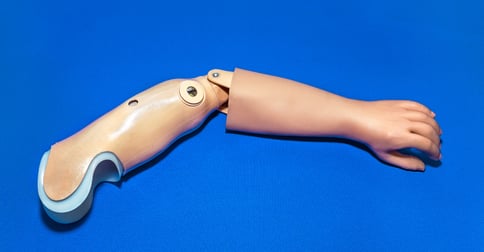The field of prosthetic devices has made some pretty incredible leaps and bounds lately. From 3D printed prostheses to devices that connect directly to your brain, prosthetic technology looks pretty promising for the future. Read on!
Civil Beginnings
The use of prosthetic devices first became widespread in the United States during the Civil War. The amputation of a ruined limb was the most efficient way to prevent gangrene, and about 60,000 amputations were done by both sides of the war, with a survival rate of 75%. The demand for prostheses went off the charts after the war had ended -- so much so that the government began offering more money to veterans to pay for their artificial limbs.
After that, from World War I all the way to our present military conflicts, prosthetic devices continued to see increased demand and progressively better technology. New materials were used, and the devices became lighter and more comfortable. Today, prosthetic limbs have reached a new level of function and comfort -- and that progress is only going to continue.
Investing in the Future
Since 2006, the Defense Advanced Research Projects Agency has invested $144 million in prosthetic research for the benefit of the estimated 1,800 U.S. soldiers who have lost a limb. Some of that money went into an invention by Hugh Herr -- a bionic ankle for people who have lost one or both legs below the knee. This device actually propels its wearer forward as they walk, which helps them conserve and regain lost energy.
Herr hopes that one day, users can simply attach their device to a bone via a titanium rod, merging the device with their body almost seamlessly.
Seamless Integration
Herr isn’t the only one with high hopes for this kind of thing. Michael McLoughlin, who works as the engineer leading the development of advanced prosthetics at Johns Hopkins University, works to create a more streamlined integration of prosthetic devices with human bodies. The Johns Hopkins lab has built a Modular Prosthetic Limb (MPL), an arm-and-hand device that has 26 joints controlled by 17 separate motors and functions almost exactly like a natural limb.
McLoughlin is looking for a way to speed up the device’s connection with the nervous system -- possibly connecting it directly to the brain. Fortunately for him (and us), researchers at Brown University actually did this when they hooked up a robotic arm directly to the brain of a 58-year-old quadriplegic named Cathy Hutchinson. As evidenced on the video results, Cathy was able to pick up a bottle and drink from it.
BioTech Has the Best in Prosthesis Technology
Here at BioTech, we love to watch the world of prosthetic devices progress to such exciting heights! From the BioTech BioSystem to carbon technology, we’re passionate about providing the latest and greatest devices for your needs. Contact us today!

